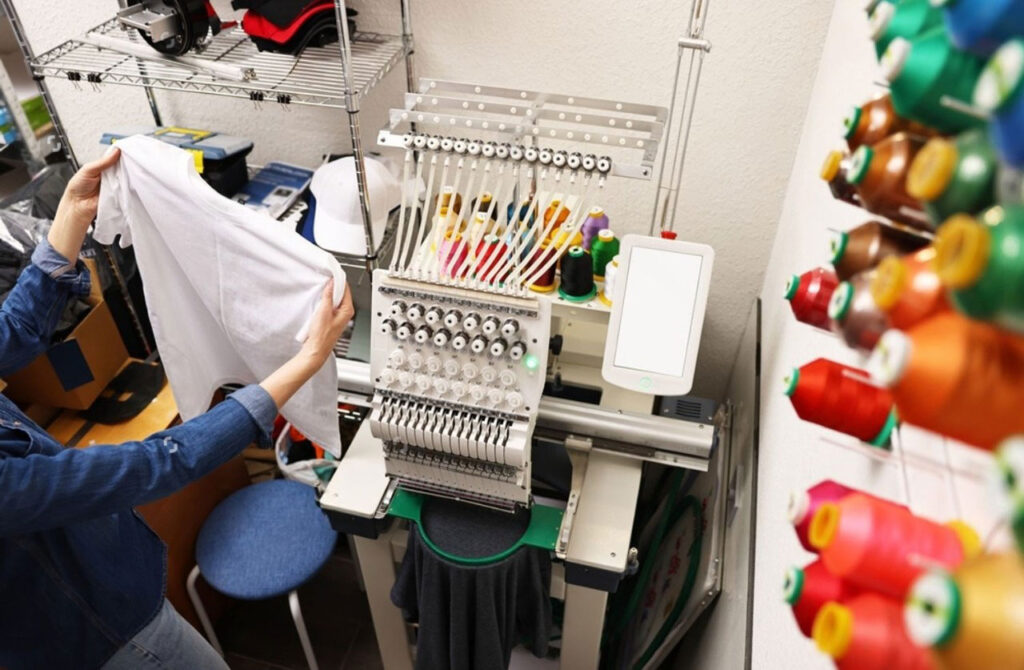You have a brilliant logo, a beautiful graphic, or a clever piece of text. You’re ready to see it embroidered, so you turn to software, hit “auto-digitize,” and watch as it magically creates a file for your machine. The preview looks okay, but when you stitch it out, the reality is disappointing: the fabric puckers, the details are blurry, and the threads break. This is the all-too-common outcome of relying solely on automation. While the promise of a quick, cheap fix is tempting, it often leads to wasted time, spoiled materials, and subpar results. This is precisely where the value of a professional embroidery digitizing service staffed by human experts becomes undeniable. These services move beyond simple conversion, applying artistry, technical knowledge, and problem-solving skills that software simply cannot replicate.
Choosing a human digitizer isn’t just about fixing a bad file; it’s about investing in a process that guarantees quality from the start. It’s the difference between having a robot take a photograph of a scene and having a master painter interpret it onto a canvas. Both might capture the subject, but only one understands light, composition, texture, and emotion. In the world of embroidery, this understanding translates directly into a durable, beautiful, and professional-looking finished product.
The Automation Illusion: Where Software Falls Short
Auto-digitizing functions, found in everything from free online tools to premium software suites, operate on a simple premise: they trace the outlines of your image and fill the spaces with predefined stitch patterns. While this seems logical, this approach ignores the fundamental physics and artistry of embroidery.
Software lacks context. It cannot understand the intent behind a design. It doesn’t know which element is the focal point, which line should be crisp, or which area can be simplified without losing the design’s character. This leads to a host of predictable problems:
-
Puckering and Distortion: Algorithms often overpack stitches, creating a dense, stiff design that pulls and warps the fabric underneath.
-
Poor Stitch Direction: Software might lay fill stitches in a uniform direction that works against the natural flow of the shape, creating an unappealing texture and weakening the design’s structure.
-
Ignoring Fabric Type: An auto-digitized file is one-size-fits-all. It will not account for the vast difference between stitching on a stiff canvas cap versus a stretchy polo shirt. The same file will fail in different ways on different materials.
-
Clogged Details: Small text and intricate features often become a tangled mess, as the software tries to force too many stitches into a tiny area.
A human digitizer anticipates and prevents these issues before the first stitch is ever sewn.
The Human Advantage: The Art and Science of Digitizing
A professional embroidery digitizing service employs experts who act as both artists and engineers. They don’t just convert your image; they interpret and engineer it for the physical world of thread and fabric. This human touch manifests in several critical areas.
1. Strategic Stitch Planning
A human digitizer makes conscious, artistic decisions about every aspect of the stitch plan. They assign stitch types (satin for smooth borders, fill for large areas, run for fine details) based on the desired visual and textural effect. More importantly, they control stitch direction. They might angle stitches to follow the curve of a leaf, radiate them from a central point to create depth, or set them perpendicular to underlying seams to increase strength. This strategic planning creates a design that is not only beautiful but also physically robust.
2. Fabric-Specific Engineering
This is perhaps the most significant advantage. A human digitizer will ask you what garment and fabric you are using. This single piece of information guides every subsequent decision.
-
For stretch knits, they will reduce stitch density, use more flexible stitch types, and add specific underlay to prevent puckering.
-
For thick towels, they will increase density and use powerful underlay to stand up against the looped pile.
-
For structured caps, they will account for the curved, seamed surface and plan the stitch sequence to avoid gaps over the center seam.
This tailored approach ensures the design looks and performs perfectly on its intended canvas.
3. Mastery of the Unseen: Underlay and Compensation
The foundation of a great embroidery design is mostly invisible. Underlay is a layer of stitches sewn before the top design that stabilizes the fabric, prevents puckering, and provides a base for the top stitches to lie smoothly. A human digitizer strategically chooses from multiple underlay types (edge walk, center walk, zig-zag) to suit each specific section of the design.
They also apply pull compensation, which proactively widens satin columns and fill areas to account for the natural pull of the thread, which can cause gaps and distortions. Software applies these features generically; a human applies them with surgical precision.
4. Intelligent Sequencing and Problem Solving
A digitizer plans the exact order in which the machine will sew the design. They group colors logically to minimize thread changes and sequence objects from background to foreground to create clean, sharp edges. When they encounter a problem in the source art—like a gradient that can’t be embroidered or text that is too small—they don’t just process it. They problem-solve, suggesting simplifications or modifications that preserve the design’s intent while making it embroidery-friendly.
The Real Cost-Benefit Analysis: Saving Money by Spending More
It’s easy to see the upfront price of a digitizing service and balk, thinking the free auto-convert button is the better financial choice. This is a short-sighted view. The true cost of a bad digitized file is much higher:
-
Wasted Materials: Ruined garments, wasted stabilizer, and spent thread add up quickly after just a few failed stitch-outs.
-
Wasted Time: Every failed design means time spent re-hooping, re-setting the machine, and troubleshooting.
-
Damaged Reputation: If you are creating items for clients or selling products, a poor-quality embroidery job can damage your brand and lose you business.
A professionally digitized file works correctly the first time, and every time. It stitches smoothly, uses thread efficiently, and produces a result you can be proud of. The initial investment pays for itself in saved materials, preserved reputation, and peace of mind.
When a Human Digitizer is Non-Negotiable
While you might get away with auto-digitizing a very simple shape, you should always choose a professional service for:
-
Company Logos and Branding: Your logo represents your business. It needs to be perfect.
-
Complex Artwork: Designs with shadows, gradients, or multiple intricate elements.
-
Small Text: Lettering under ¼ inch requires expert technique to remain legible.
-
Challenging Fabrics: Any project on fleece, terry cloth, nylon, or stretchy knits.
-
High-Volume Orders: Consistency is key, and a professional file ensures every item looks identical.
Conclusion: Invest in Interpretation, Not Just Conversion
Embroidery digitizing is not a mechanical process; it is a craft. It requires an understanding of how two-dimensional art translates into a three-dimensional textile object. A professional embroidery digitizing service provides more than a file—it provides a solution. It offers the assurance that your vision will be interpreted by an expert who can navigate the technical challenges of the medium while enhancing its artistic potential.
By choosing a human over an algorithm, you are investing in quality, durability, and professionalism. You are ensuring that your design isn’t just converted, but it’s truly brought to life with the clarity, texture, and integrity it deserves. In the end, the question isn’t whether you can afford to use a digitizing service, but whether you can afford not to.


